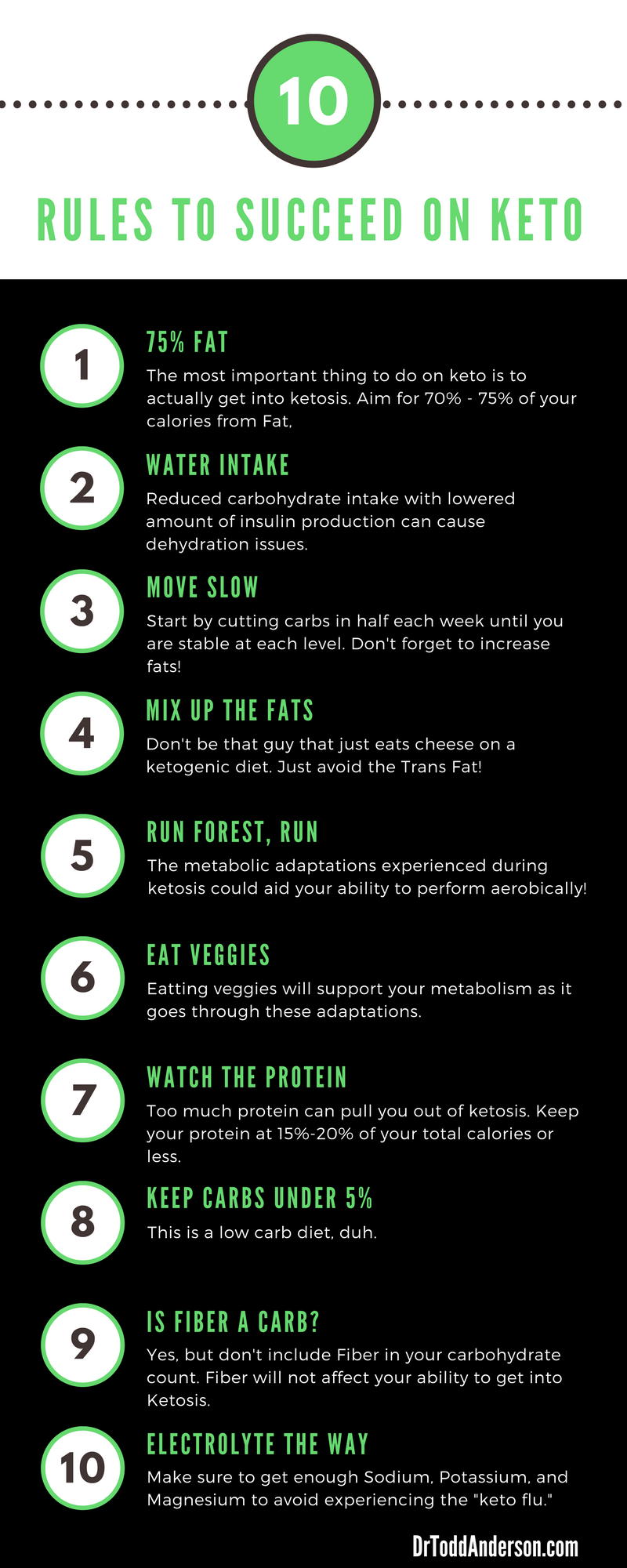If you or a friend of yours has tried going into ketosis and said any of the following,
“I just felt tired, dizzy, and cranky the whole time”
“it’s just like the Adkins diet”
“it’s just not healthy”
“the weight loss is just temporary”
then you’re doing it wrong.

Don’t be that guy that doesn’t…
1. Eat enough fat for Ketosis
This might seem intuitive, but you’d be surprised. This is in fact, a high fat diet. You should eating 70-75% of your calories from fat. The point of metabolic ketosis is to create some metabolic flexibility in your diet.
Metabolic flexibility is a term used to describe your bodies ability switch from carb burning to fat burning.
If you aren’t forcing your body to run on fat, it won’t. To do this, you will need to track how much fat you are eating initially to make sure. The number one reason clinically I have found with people having sugar cravings is that they are not eating enough fat.
2. Drink enough water for Ketosis
Dropping carbohydrates will lower the bodies need to retain water. Water follows carbohydrates into muscle and hepatic tissue. This does account for the high amounts of weight loss when cutting carbs out and the gain after introducing carbohydrates back in. A secondary mechanism to dropping water weight is that insulin is responsible for water retention as well. A healthy water intake goal is at LEAST half your body weight in oz. (200 pounds = 100oz of water)
3. Drop carbs slowly enough for Ketosis
The standard American diet has trained us to be really great at burning sugar and really terrible at burning fat. When a person removes carbs that the body has used as a primary energy source and switches to fat, there will be issues. You may demand more energy than the body is able to grab from fat initially. To avoid this take your carbs and cut them in half as you get more and more comfortable. This should not be an uncomfortable process.
These are just the top 3 reasons people fail at this diet, but there are plenty more. You should feel more energy, clearer thoughts, and a decreased dependency on frequency of meals. Don’t bear with it, change something. After you dial it in, I recommend you continue for 6-8 weeks and reassess. If you are developing any symptoms or losing benefits, then proceed to slowly add carbs in according to your activity level.

My final tip is variation and balance. It is imperative that you get your fats from different sources and fill your plate will healthy vegetables to support your new healthy lifestyle.
Wondering how much fat I eat? Check it out here.
As always if you have any questions at all, don’t hesitate to ask.
- Piecing Together Painful Psoriasis - January 20, 2022
- HOW TO: Actually Address LOW Testosterone - December 28, 2021
- How to Fix a Slow Metabolism - September 23, 2021